
The yearbook Czech Architecture 2016-2017 was published under the guidance of M. Steinbachová
In mid-April, the sports hall in Dolní Břežany hosted the presentation of the eighteenth yearbook of Czech architecture. This year, Dagmar Vernerová from the Prostor publishing house entrusted the compilation to Prague architect Marcela Steinbachová, who thus became only the third curator in the eighteen-year history, following Markéta Cajthamlová and Jitka Ressová. Each yearbook is a subjective selection of thirty buildings. The curator always finds themselves in the disadvantageous position of having to choose just one-tenth from hundreds of realizations, which sensibly affects more than one ego. Over the years, an unwritten rule has developed that a curator should not include their own realizations in the selection. However, due to the relatively small architectural scene in the Czech Republic, one can never avoid having a close connection to the selected buildings not just from a construction perspective. Marcela Steinbachová managed to escape the limiting cap of thirty buildings with the introductory text "Fifteen pairs," where, besides posing several questions for improving the Czech architectural environment, she also casually introduced another thirty realizations completed in the past year. Many curators of previous yearbooks have forcibly clung to the idea of presenting interesting creations outside of the centers. In this year's yearbook, Prague and Brno claimed a third of the publication, which sounds logical, as these cities concentrate all the potential needed for the emergence of quality architecture, but it is certainly worthwhile to continue exploring smaller municipalities and discovering increasingly frequent successful ventures.
In the selection of buildings, quality manifesting in context and detail was decisive for Marcela Steinbachová, so that the building does not just resonate positively on a media level but is genuinely beneficial to its surroundings and everyday life. In choosing buildings, she intentionally avoided greenfield projects, seeking houses that "communicate across the fence." Through pairs, she demonstrates various approaches to a similar assignment and also that there is no single universal solution. Architecture offers many faces, and the yearbook, among other things, reveals several pressing issues in today's construction industry. The selection of realizations opens with a pair of sacred buildings of various scales, but common private initiatives of local residents, and the thirty buildings are concluded with a look at the future of housing estates.
At the end of the yearbook, Jan Šépka invited Michal Škoda for a conversation, with both personalities connected by the successful project "Perception," which two years ago featured one of the most visited architectural exhibitions at the House of Arts in České Budějovice. Michal Škoda, who has long been striving to deepen public interest in architecture, is also proof that from almost nothing, a respected institution can be built that transcends the borders of our country.
The presentation of the yearbook is annually associated with complaints about the lack of architectural competitions and the absent conceptual support from the state. To great joy, this year's publication included four realizations commissioned by municipal authorities, allowing for the creation of public buildings that enhance the shared environment.
As already mentioned, the presentation of this year's yearbook took place in the sports hall in Dolní Břežany in the presence of mayor Věslav Michalik. The festive afternoon was combined with a tour of the municipality, where they are rightfully proud of their public buildings. A similarly successful path was also taken by Mayor Martin Kupka from the municipality of Líbeznice on the northern outskirts of Prague. Instead of lamenting over the inaction of the highest positions, small municipalities have chosen to lead by example. What the state administration achieves in small timid steps is fully realized by private companies, understanding that the location of their firm serves as an advertisement that informs everyone about whom we are dealing with.
I would like to be wrong that in next year's yearbook by Luděk Rýzner, there will be a lack of quality buildings arising from open competitions initiated by public institutions and without state priority.
You can purchase the yearbook Czech Architecture 2016-2017 in our e-shop.
In the selection of buildings, quality manifesting in context and detail was decisive for Marcela Steinbachová, so that the building does not just resonate positively on a media level but is genuinely beneficial to its surroundings and everyday life. In choosing buildings, she intentionally avoided greenfield projects, seeking houses that "communicate across the fence." Through pairs, she demonstrates various approaches to a similar assignment and also that there is no single universal solution. Architecture offers many faces, and the yearbook, among other things, reveals several pressing issues in today's construction industry. The selection of realizations opens with a pair of sacred buildings of various scales, but common private initiatives of local residents, and the thirty buildings are concluded with a look at the future of housing estates.
At the end of the yearbook, Jan Šépka invited Michal Škoda for a conversation, with both personalities connected by the successful project "Perception," which two years ago featured one of the most visited architectural exhibitions at the House of Arts in České Budějovice. Michal Škoda, who has long been striving to deepen public interest in architecture, is also proof that from almost nothing, a respected institution can be built that transcends the borders of our country.
The presentation of the yearbook is annually associated with complaints about the lack of architectural competitions and the absent conceptual support from the state. To great joy, this year's publication included four realizations commissioned by municipal authorities, allowing for the creation of public buildings that enhance the shared environment.
As already mentioned, the presentation of this year's yearbook took place in the sports hall in Dolní Břežany in the presence of mayor Věslav Michalik. The festive afternoon was combined with a tour of the municipality, where they are rightfully proud of their public buildings. A similarly successful path was also taken by Mayor Martin Kupka from the municipality of Líbeznice on the northern outskirts of Prague. Instead of lamenting over the inaction of the highest positions, small municipalities have chosen to lead by example. What the state administration achieves in small timid steps is fully realized by private companies, understanding that the location of their firm serves as an advertisement that informs everyone about whom we are dealing with.
I would like to be wrong that in next year's yearbook by Luděk Rýzner, there will be a lack of quality buildings arising from open competitions initiated by public institutions and without state priority.
You can purchase the yearbook Czech Architecture 2016-2017 in our e-shop.
The English translation is powered by AI tool. Switch to Czech to view the original text source.
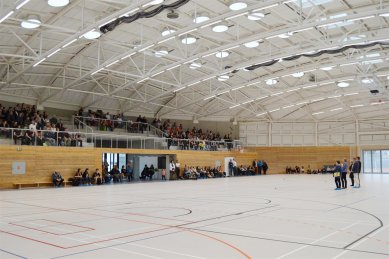
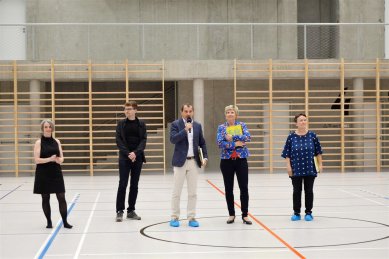
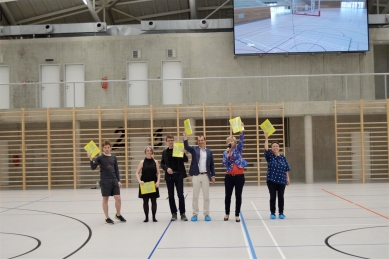

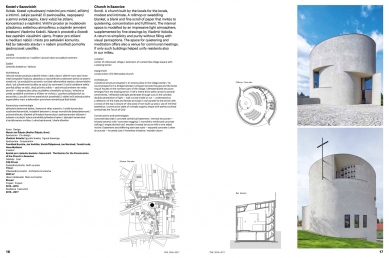
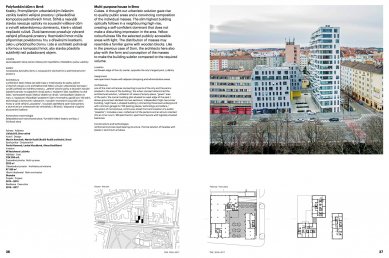
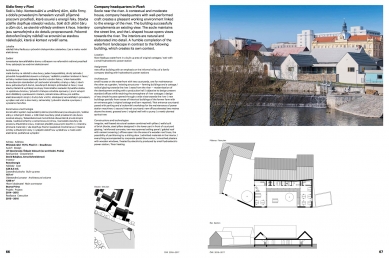
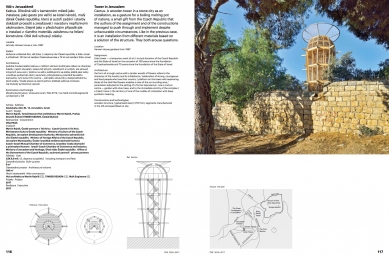
0 comments
add comment
Related articles
0
07.05.2021 | Yearbook Czech Architecture 2020-2021 - Call for Submissions of Buildings
0
07.06.2017 | Architecture Overlaps: Marcela Steinbachová – Tripod
0
11.04.2017 | Marcela Steinbachová : Work for Circle and Group
0
26.09.2016 | The Architect of the Year 2016 was Marcela Steinbachová
0
25.09.2016 | Marcela Steinbachová is one of the most prominent Czech architects
0
22.04.2015 | The Yearbook Czech Architecture 2013-2014 was launched
1
12.04.2011 | The Yearbook Czech Architecture 2009-2010 will be published on April 20
30
17.04.2008 | Šépkova Yearbook of Czech Architecture Baptized
1
11.04.2007 | Yearbook Czech Architecture 2005-2006 was baptized
0
21.04.2006 | This year's architectural yearbook was ceremoniously unveiled










